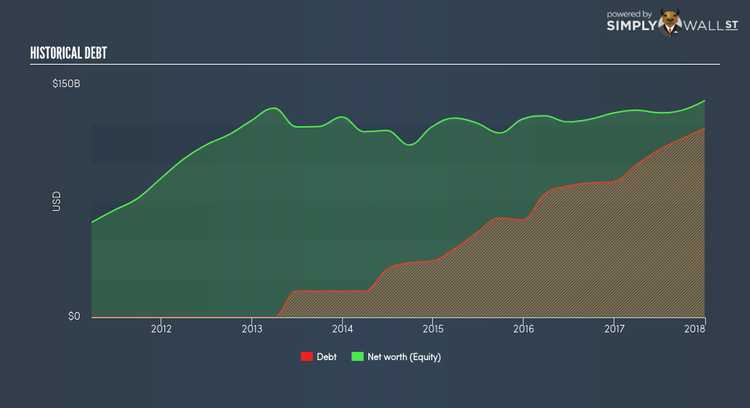What does Apple Inc’s (NASDAQ:AAPL) Balance Sheet Tell Us About Its Future?

Investors seeking to preserve capital in a volatile environment might consider large-cap stocks such as Apple Inc (NASDAQ:AAPL) a safer option. Market participants who are conscious of risk tend to search for large firms, attracted by the prospect of varied revenue sources and strong returns on capital. However, the health of the financials determines whether the company continues to succeed. This article will examine Apple’s financial liquidity and debt levels to get an idea of whether the company can deal with cyclical downturns and maintain funds to accommodate strategic spending for future growth. Note that this information is centred entirely on financial health and is a high-level overview, so I encourage you to look further into AAPL here. See our latest analysis for Apple
Does AAPL produce enough cash relative to debt?
AAPL has built up its total debt levels in the last twelve months, from US$87.03B to US$115.68B – this includes both the current and long-term debt. With this rise in debt, the current cash and short-term investment levels stands at US$74.40B for investing into the business. Moreover, AAPL has produced US$63.60B in operating cash flow during the same period of time, resulting in an operating cash to total debt ratio of 54.98%, indicating that AAPL’s debt is appropriately covered by operating cash. This ratio can also be a sign of operational efficiency as an alternative to return on assets. In AAPL’s case, it is able to generate 0.55x cash from its debt capital.
Can AAPL pay its short-term liabilities?
At the current liabilities level of US$100.81B liabilities, it appears that the company has maintained a safe level of current assets to meet its obligations, with the current ratio last standing at 1.28x. Usually, for Tech companies, this is a suitable ratio as there’s enough of a cash buffer without holding too capital in low return investments.
Is AAPL’s debt level acceptable?
AAPL is a relatively highly levered company with a debt-to-equity of 87.30%. This isn’t uncommon for large companies because interest payments on debt are tax deductible, meaning debt can be a cheaper source of capital than equity. Since large-caps are seen as safer than their smaller constituents, they tend to enjoy lower cost of capital.
Next Steps:
Although AAPL’s debt level is towards the higher end of the spectrum, its cash flow coverage seems adequate to meet obligations which means its debt is being efficiently utilised. This may mean this is an optimal capital structure for the business, given that it is also meeting its short-term commitment. Keep in mind I haven’t considered other factors such as how AAPL has been performing in the past. I suggest you continue to research Apple to get a better picture of the large-cap by looking at:
Future Outlook: What are well-informed industry analysts predicting for AAPL’s future growth? Take a look at our free research report of analyst consensus for AAPL’s outlook.
Valuation: What is AAPL worth today? Is the stock undervalued, even when its growth outlook is factored into its intrinsic value? The intrinsic value infographic in our free research report helps visualize whether AAPL is currently mispriced by the market.
Other High-Performing Stocks: Are there other stocks that provide better prospects with proven track records? Explore our free list of these great stocks here.
To help readers see pass the short term volatility of the financial market, we aim to bring you a long-term focused research analysis purely driven by fundamental data. Note that our analysis does not factor in the latest price sensitive company announcements.
The author is an independent contributor and at the time of publication had no position in the stocks mentioned.

